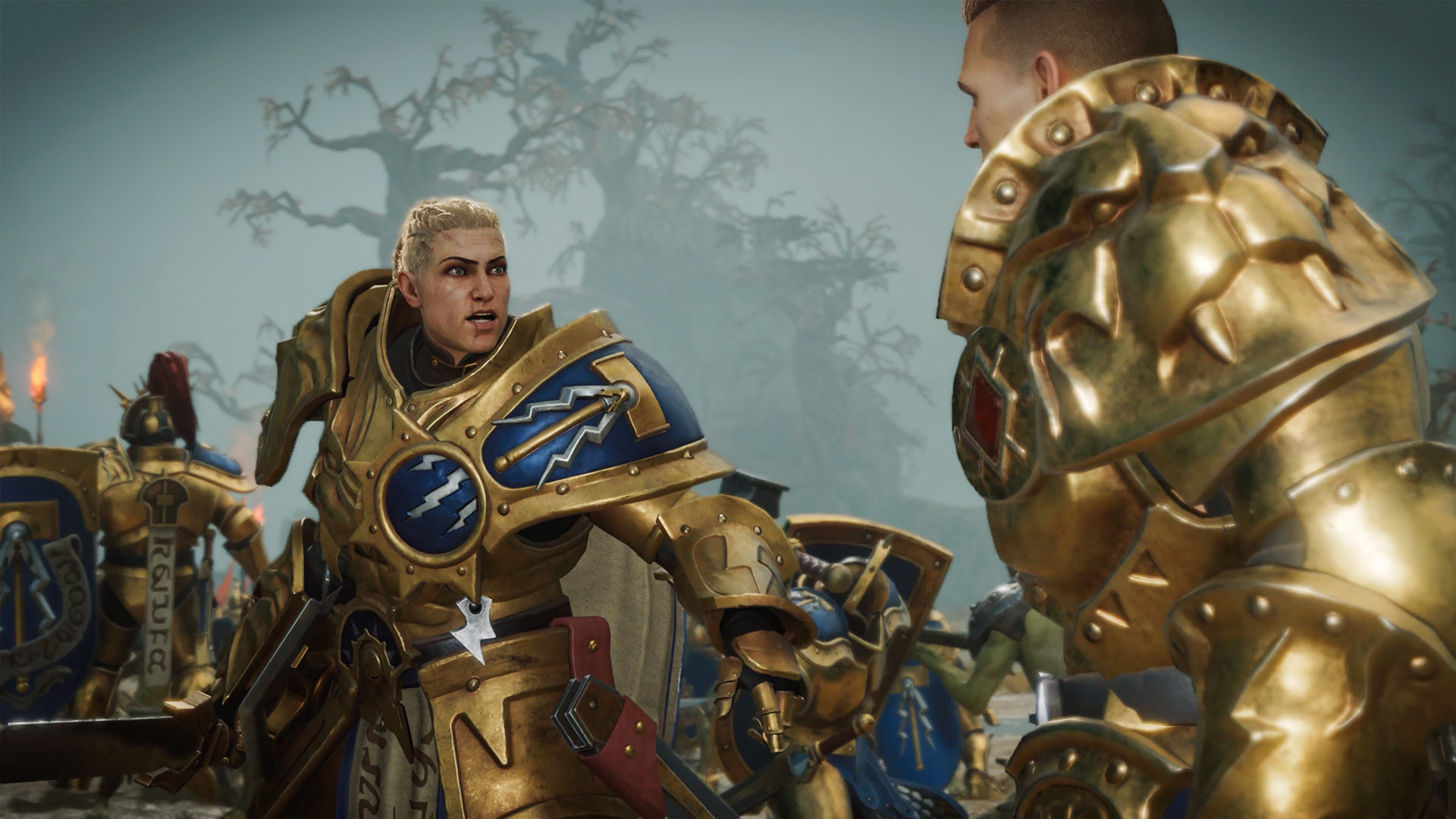
Platform reviewed: PC
Available on: Xbox Series X|S, PS5, PC
Release Date: November 17
Warhammer Age of Sigmar: Realms of Ruin is all about accessible, visually satisfying fantasy violence. Though this RTS from Frontier Developments fails to challenge the established genre conventions, the game is often joyful and stirring. However, narrow unit rosters and a flawed single-player campaign hold the fantasy strategy game back from true greatness.
Realms of Ruin takes place in Games Workshop’s sprawling Age of Sigmar universe and marks the first RTS to ever take on the bombastic and larger-than-life setting. When it comes to capturing the fantastical spectacle and violence of Age of Sigmar, Frontier Developments has acquitted itself well. Towering golden Stormcast Warriors are brought to life with fluid animations and modern graphics, as are their villainous adversaries.
That said, though the main single-player campaign does lovingly capture the characters and aesthetic of Age of Sigmar, it also feels incomplete. Without a map or an intelligible framing device, the linear battles on offer seem disjointed - especially since the campaign jumps around the central factions liberally. As well as the gold-clad Stormcast Eternals, you’ll also find yourself commanding the cunning Orruk Kruleboyz, the eldritch Disciples of Tzeench, and the ghostly Nighthaunt; seeing more than the occasional fight from their perspectives.
The single-player campaign does lovingly capture the characters and aesthetic of Age of Sigmar
This breadth often makes the campaign feel stretched thin. Though the impressive, motion-captured cutscenes are a real treat for fans of the setting, there’s little connective tissue to bind the stirring setpieces together.
Combat in Reams of Ruin suffers from the opposite issue. Though accessible, the game’s core combat mechanics and unit rosters are simple, pared-down affairs that will leave those hungry for a deeper RTS experience left wanting more.
Fight club
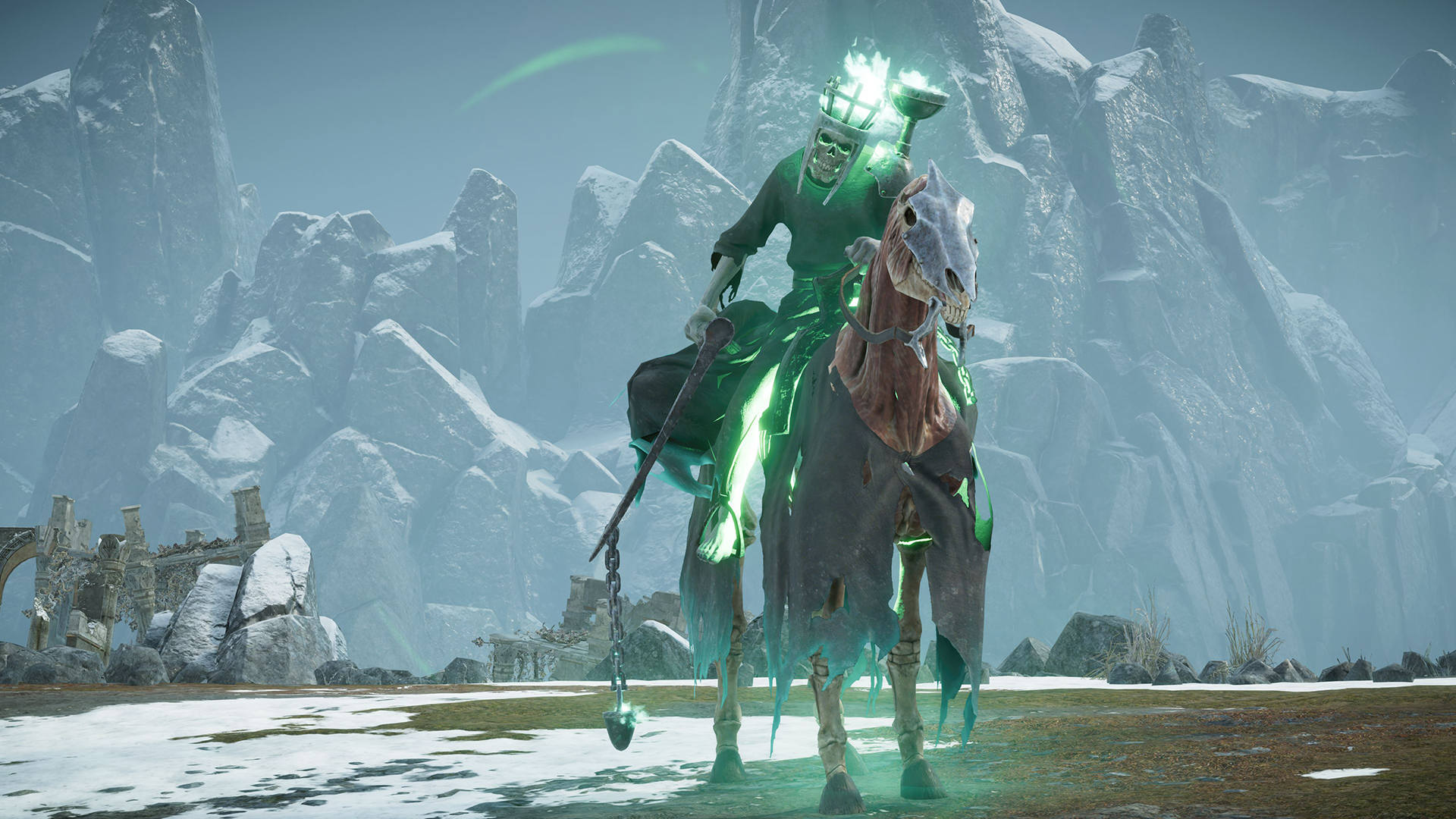
Realms of Ruin boasts an accessible strategy formula that, though easy to learn, skimps on depth at times. It starts with a classic unit triangle. Offensive melee units beat defensive melee units which, in turn, are resistant to ranged damage. Rounding out the triangle, ranged units are great at picking off lightly armored offensive troops.
You send out your units from a single base to secure victory points and control points. The latter nets you resources that you can use for new units and upgrades. while, should you hold a majority of victory points for long enough, you’ll win the match. It’s a tried and trusted formula that will be familiar to fans of Warhammer 40,000: Dawn of War 2 and Company of Heroes 3.
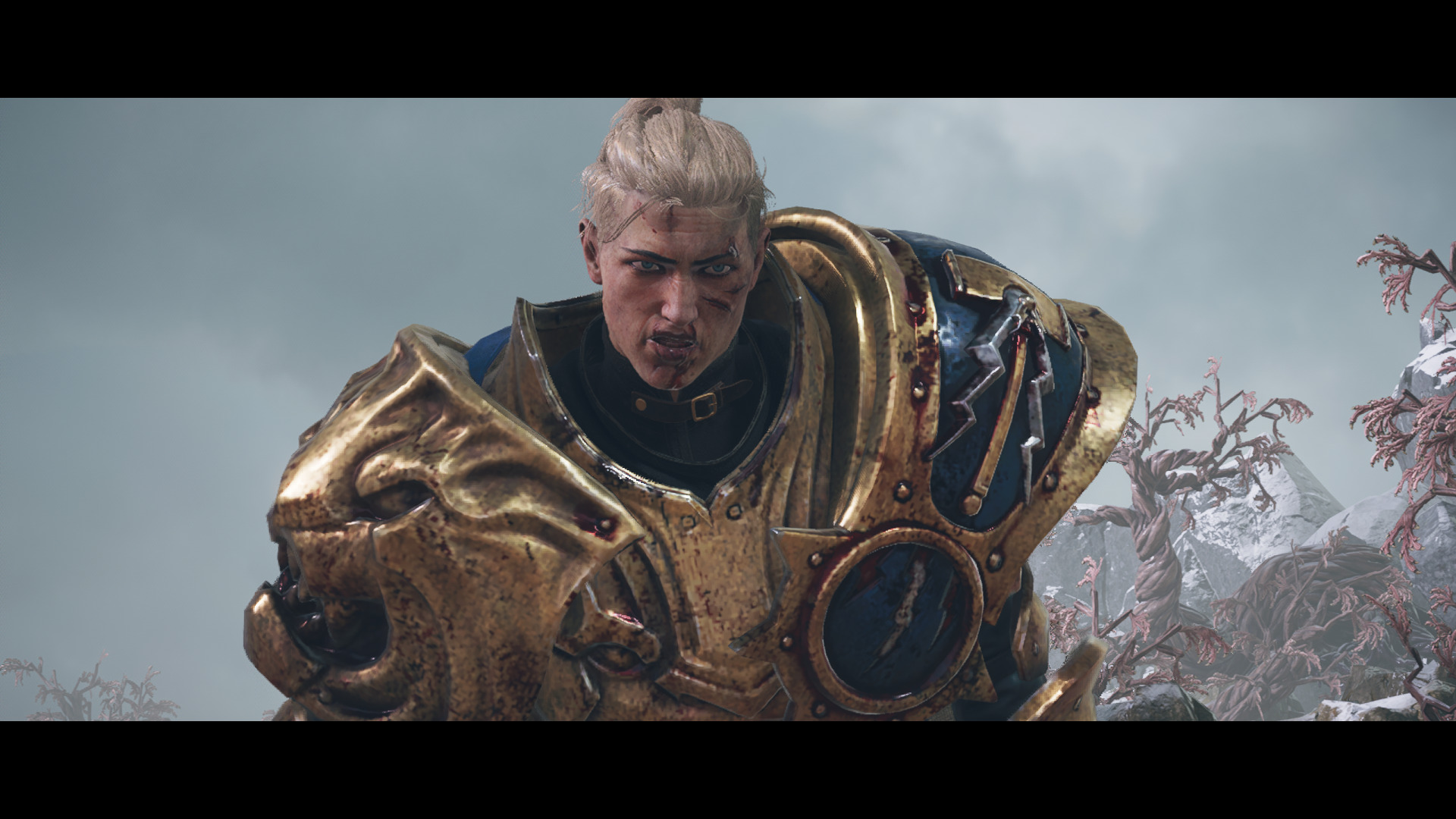
One campaign mission followed Sigrun and a group of Stormcast stragglers taking the fight to an Orruk leader. This culminated in a dramatic and moving cutscene that saw a battered Sigrun suffer a grievous injury. The motion capture allowed for compelling and realistic character expressions which helped sell the emotional weight of the scene.
As a basis for a strategy game, these qualities are hardly a misstep. However, thanks to the lack of unit variety and the inescapability of the unit triangle, you’ll often find yourself stuck in predictable skirmishes with even more predictable outcomes. Regardless of micromanagement from either side, I know that my shield-bearing Stormcast Liberators will always make short work of ranged specialists like the demonic Horrors of Tzeench. In a straight-up fight, the outcome is, essentially, predetermined.
This predictability is reinforced by the ‘sticky’ quality of Realms of Ruin’s melee combat. Once your units get bogged down in close quarters, they can’t leave unless they either wipe out the enemy or retreat. This removes opportunities for movement-based micromanagement, making for an experience as reminiscent of auto battlers as it is of a full-blown RTS.
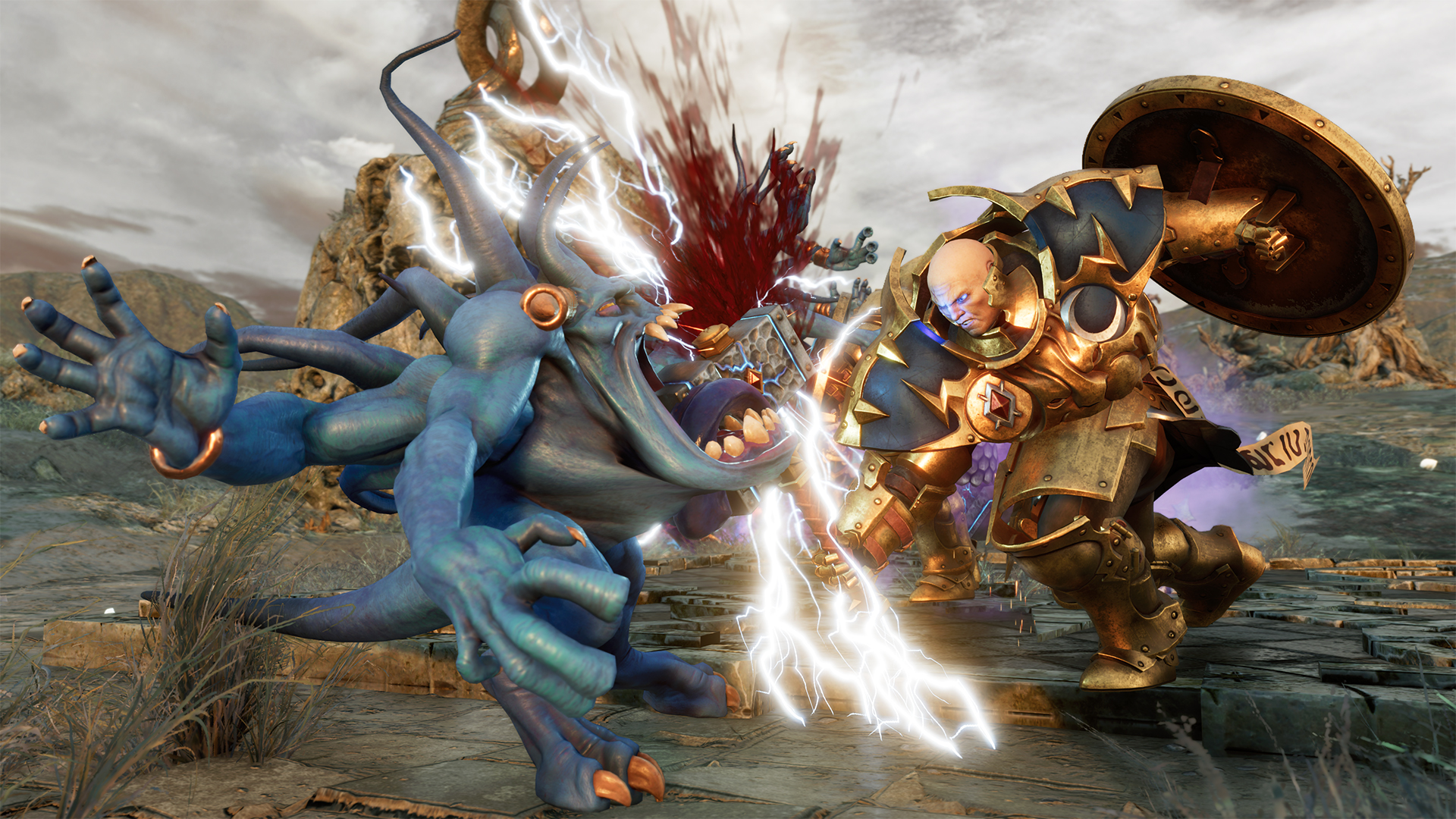
That said, the numerous active abilities available to almost every unit do offer a much-needed extra layer of strategy. All offensive units can charge, allowing them to plow forward into targets with impunity. Heroes, too, often come with powerful temporary buffs or area-of-effect attacks. The variance across the units and factions here is impressive. Upgrade them properly and your usually melee-oriented Karic Acolytes can learn to throw bolts of sorcerous energy at range. Your Stormcast Liberators can use theirs to gain a temporary shield. Orruk Gutrippaz can bang on their shields, buffing allies and striking their enemies with fear.
However, these contrasting abilities change the pace of combat infrequently on account of their cooldowns. For the most part, you can set and forget your combats, returning every so often to activate the occasional ability as it becomes available again. It’s fun - but hardly the frantic micromanagement - with all the excitement and tactical possibilities this can bring - of Command and Conquer or Starcraft 2.
Lost in the realms
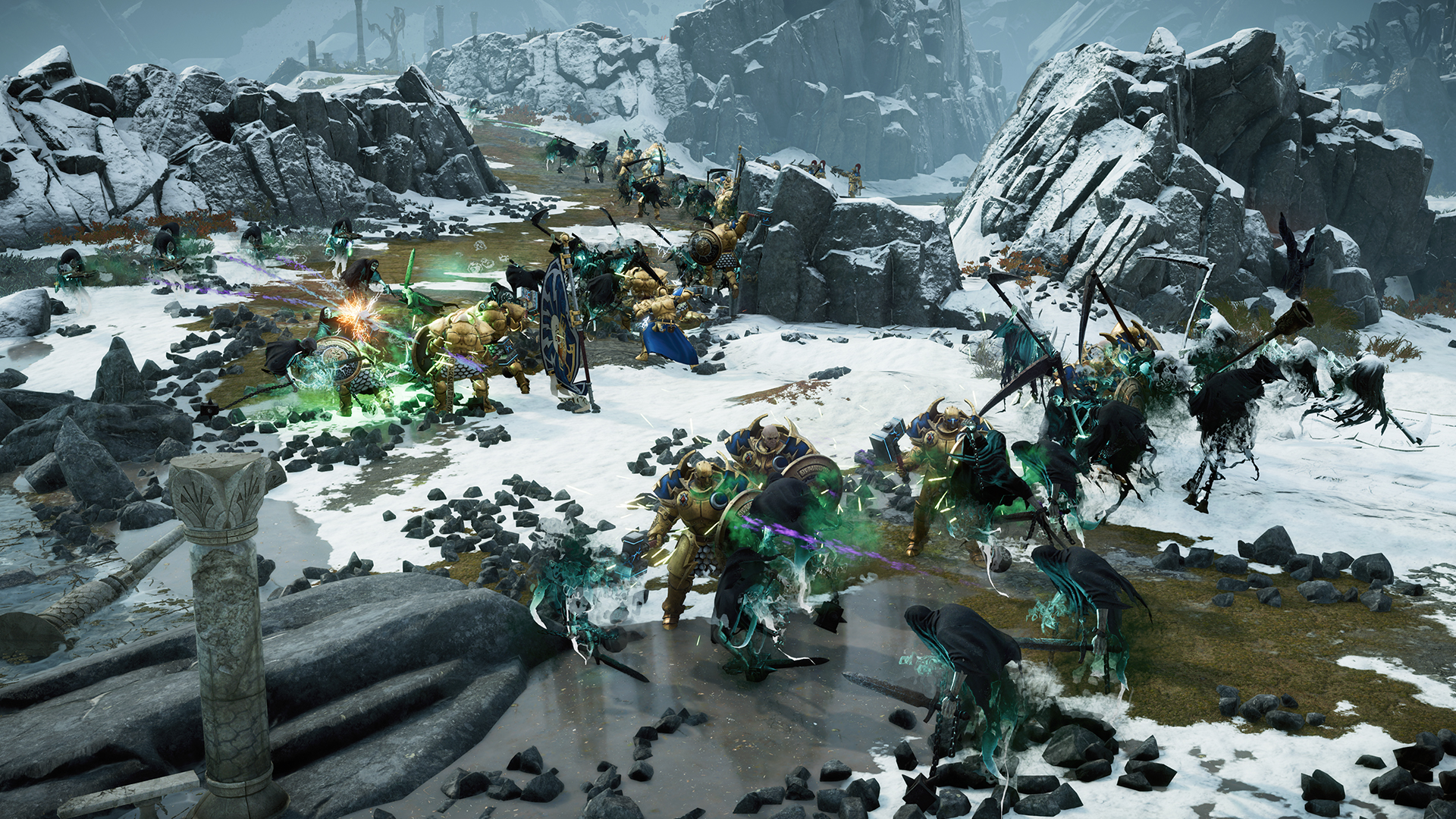
Realms of Ruin places a significant emphasis on its single-player campaign. Here, fans of Age of Sigmar will find themselves very much at home. The story follows Sigrun, a Stormcast leader who is attempting to turn the tide in her army’s ongoing war with the Orruks by venturing out from her fortress of Harkanibus to retrieve a powerful artifact.
The facial movements of the central characters are impressively realistic
The narrative unfolds in an old-school, linear fashion. You watch a cutscene, play a mission, and then watch some more cutscenes. The cinematics themselves are excellent and set a new bar when it comes to visual fidelity in RTS storytelling. The facial movements of the central characters are impressively realistic, often portraying subtle hints of emotion that would have been impossible to convey with older technology.
In one moving scene, Iden, Sigrun’s second-in-command, witnesses a duel between Sigrun and an Orruk leader. His eyes twitch and his face drops with all the emotion and pathos you’d expect from a bona fide human.
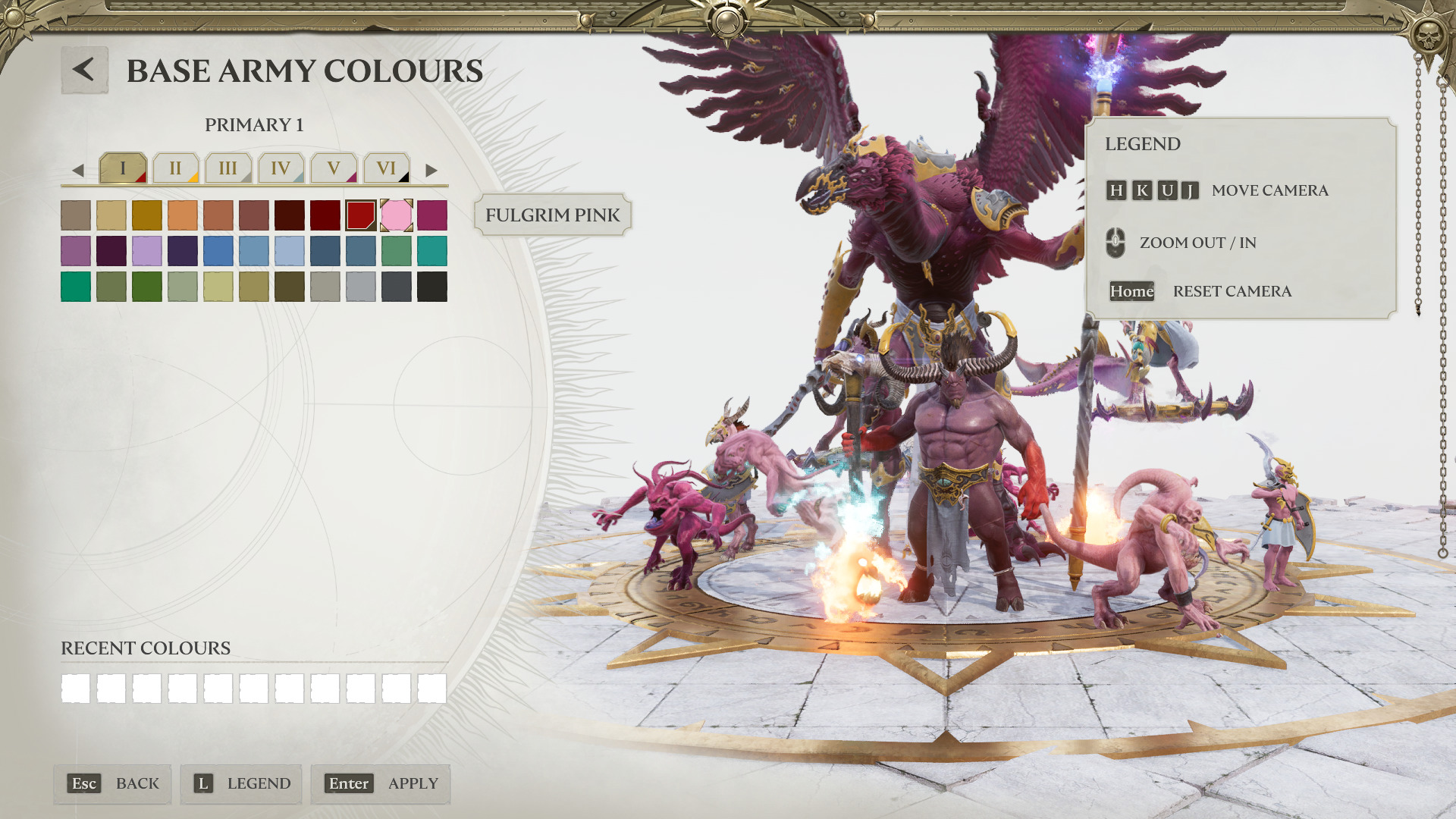
Despite the strength of these cutscenes, the story itself feels disjointed. There is very little exposition. The opening crawl uses a lot of proper nouns. Even as someone familiar with the setting, I found myself untethered. Why is Sigmar important? Why are the Stormcast fighting for him? What is Harkanibus like and why is it important for us to defend it? Realms of Ruin uses an extremely narrow lens to tell its story and suffers for it.
Fortunately, this sense of aimlessness does not apply to the game’s multiplayer systems. A powerful map builder, ranked and casual matches, and army painting tools are all available for those looking to spice up their experience. Conquest Mode also offers a novel twist, providing self-contained roguelike mini-campaigns with their own leaderboards. Though boasting no mind-blowing innovations, all of these systems are robust and fit for purpose. For those who gel with Realms of Ruin’s simple yet visually impressive battles, there’s plenty on offer to keep them engaged.
Realms of Ruin is a great choice for fans of the setting or those looking for a gentle and accessible introduction to the RTS genre. However, any looking for substantial depth will find themselves disappointed.
Accessibility
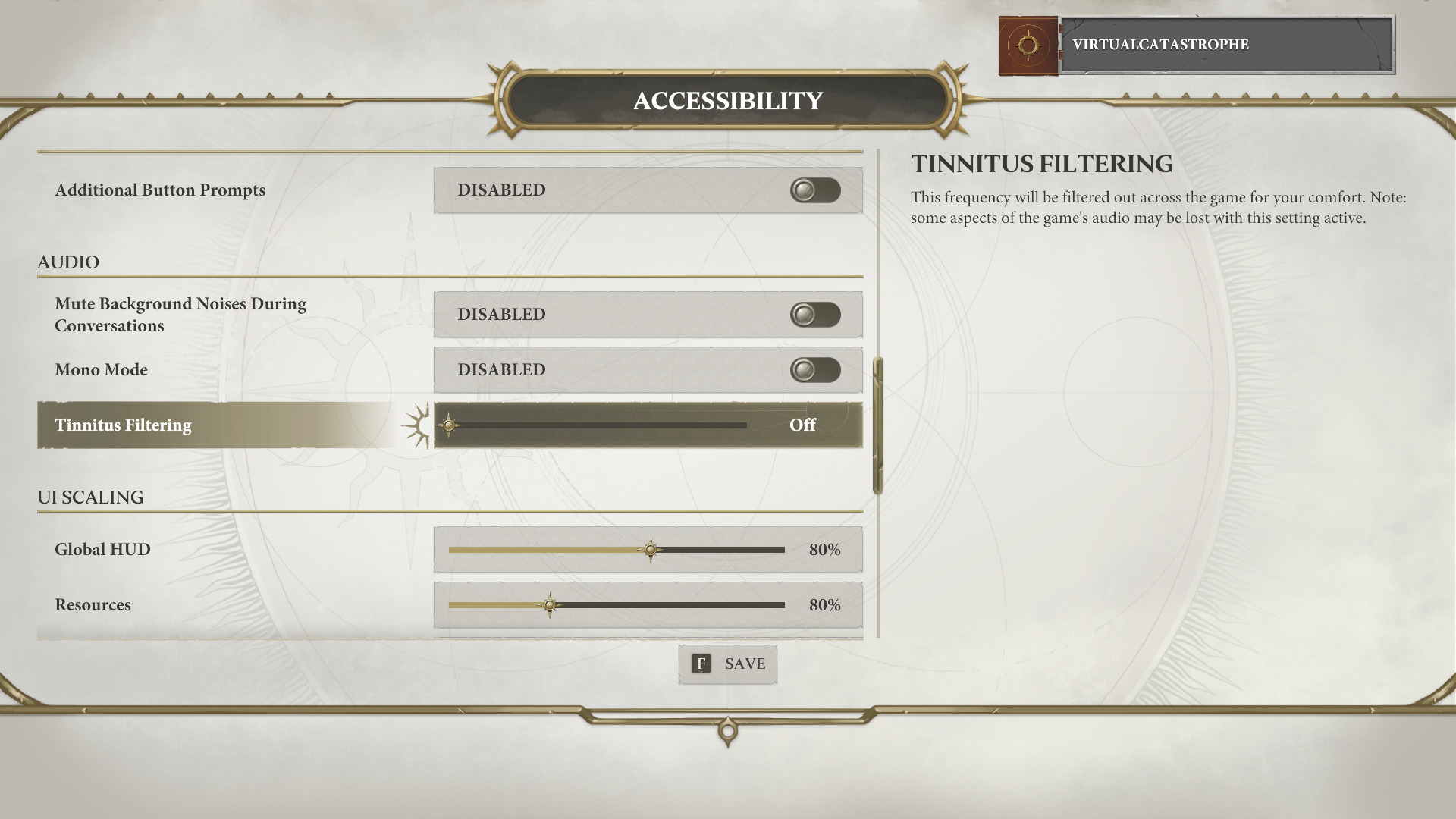
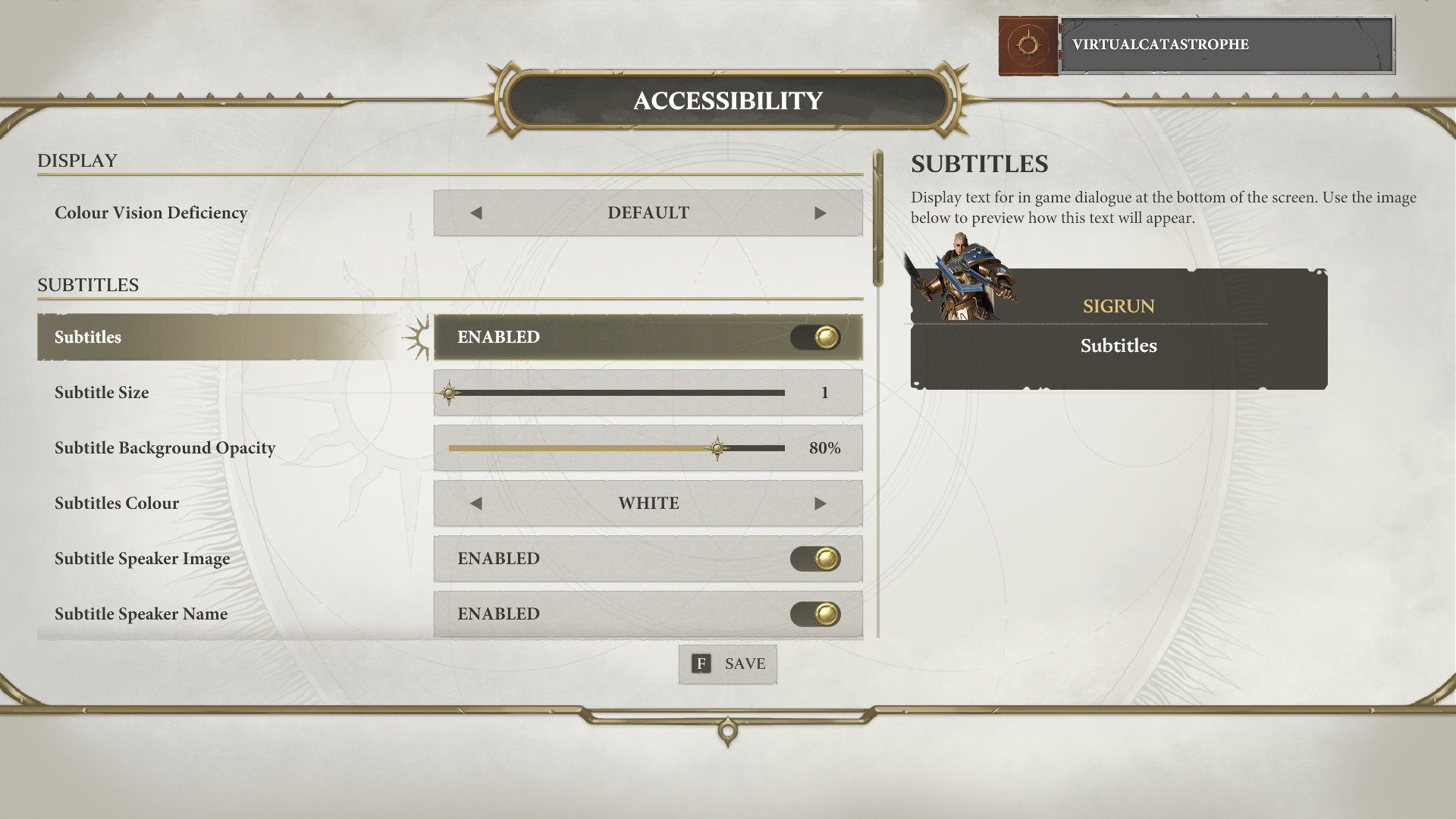
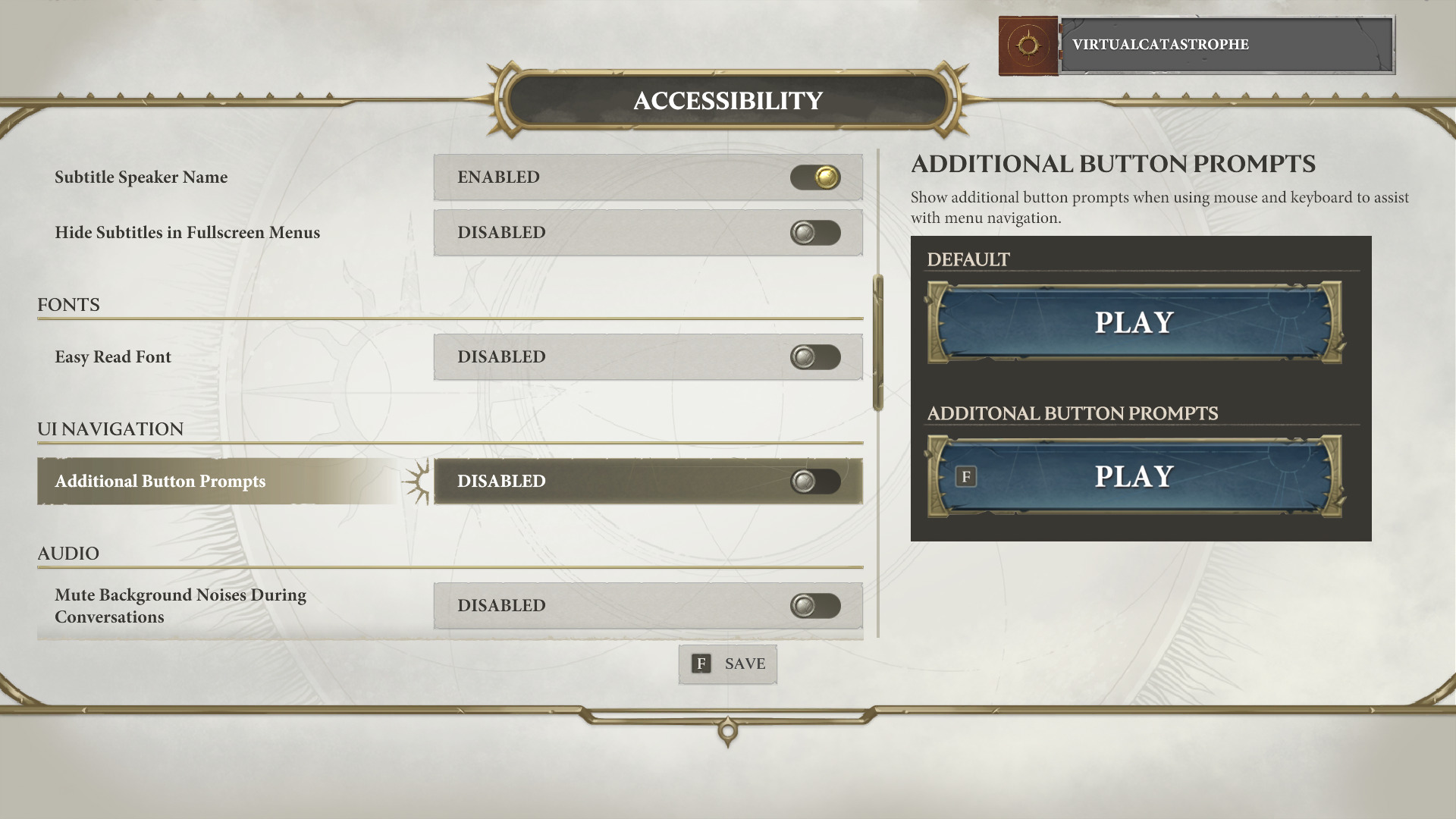
Warhammer Age of Sigmar: Realms of Ruin boasts a range of accessibility features. In addition to numerous visual modes for colorblind players, the game’s subtitles can be customized when it comes to size, background opacity, and color. There’s also the option of an ‘easy read’ font.
Those with hearing difficulties can opt to mute background noises during conversations and can also take advantage of tinnitus filtering features. UI scaling is also available.
How we reviewed
I spent roughly 15 hours with Warhammer Age of Sigmar: Realms of Ruin. During my time with the game, I played a range of campaign missions, while also taking the time to try out every faction in skirmish mode. I also tested the map editor and army painter features, as well as Conquest Mode.
I’ve spent thousands of hours of my life playing real-time strategy games. I initially cut my teeth on Warhammer 40,000: Dawn of War as a teenager, before moving on to Starcraft 2’s intense 1v1 ladders. My experience with the genre proved vital when approaching Realms of Ruin and provided useful points of comparison for the review.
Looking for more spectacle in your games? Check out our lists of the best RPGs and the best PC strategy games.







